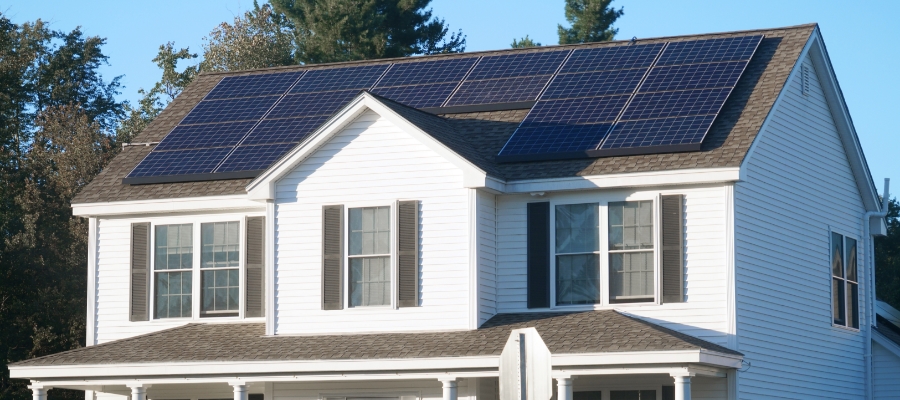
Solar systems are built to last, but like any home investment, they need proper care over time. Whether it’s cleaning, diagnostics, inverter service, or a full repair, understanding the cost of solar maintenance helps homeowners plan ahead and protect their long-term energy production.
If you’re wondering how much solar maintenance actually costs in Texas, this guide breaks down typical pricing, what influences costs, and which services most homeowners need annually.
Why Solar Maintenance Matters
Texas homeowners deal with unique conditions — intense heat, dust, hailstorms, and seasonal pollen. Regular solar maintenance helps:
- Prevent production loss
- Catch electrical issues early
- Protect roof penetrations
- Extend system lifespan
- Avoid expensive repairs later
A well-maintained system produces more energy and runs safely year-round.
Typical Solar Maintenance Services & Their Costs
Below is a realistic breakdown of average prices Texas homeowners can expect. (These are industry-standard ranges — actual quotes vary based on system size and condition.)
1. Solar Panel Cleaning
Average Cost: $150–$450 per cleaning
Cleaning frequency depends on dust levels, pollen, trees, storms, and your location. Professional cleaning includes:
- Solar-safe scrubbing
- Purified water rinsing
- Removal of debris and buildup
- Visual inspection of panels
DIY cleaning risks scratching the glass or damaging wiring, so professional service is highly recommended.
2. Solar System Inspection / Diagnostic Service
Average Cost: $150–$300
A full diagnostic checks:
- Wiring
- Connectors
- Voltage output
- Inverter performance
- Monitoring accuracy
- Racking and mounts
- Roof penetrations and flashing
This helps identify production loss, shading issues, storm damage, or failing components.
3. Solar Repair Work
Average Cost: $200–$1,500+ depending on repair
Common repairs include:
- Wiring corrections
- Damaged connectors
- Faulty optimizers
- Failed diodes
- Cracked panels
- Grounding issues
- Monitoring restoration
Minor repairs are cheaper, while panel replacement or significant electrical repairs cost more.
4. Inverter Repair or Replacement
Repair Cost: $200–$600
Replacement Cost: $1,200–$3,000+ depending on model
Inverters typically last 8–12 years and are the most common component to fail. Replacements are one of the larger solar maintenance expenses, but they restore full system performance.
5. Critter Guard Installation
Average Cost: $300–$800
Birds and wildlife can nest under panels and chew wiring. Critter guard prevents future damage and protects your system.
6. Post-Storm Solar Inspection
Average Cost: $150–$300
After hail or high winds, systems should be checked for:
- Micro-cracks
- Loose wiring
- Damaged mounts
- Roof penetration issues
- Broken panels
Insurance usually covers repairs if storm damage is confirmed.
7. Solar Detach & Reset (For Roof Replacement)
Average Cost: $1,000–$3,500+ depending on system size
This service includes:
- Safe panel removal
- Hardware removal
- Storage during roof work
- New flashing
- System reinstall
- Electrical reconnection
- Performance testing
Roofers cannot safely remove solar panels — they must be handled by solar professionals.
What Affects the Cost of Solar Maintenance?
Several factors influence how much you’ll pay:
1. System Size
More panels = more labor and equipment.
2. Roof Type & Steepness
Steeper or complicated roofs cost more due to safety requirements.
3. System Age
Older systems may require more diagnostics, rewiring, or component upgrades.
4. Weather Exposure
Homes in high-wind or dusty areas need more frequent maintenance.
5. Component Type (String vs. Microinverter)
Microinverter systems have different diagnostic and repair needs compared to string inverter systems.
How Often Should Texas Homeowners Budget for Maintenance?
For most systems in the Dallas–Fort Worth area, the recommended schedule is:
- Cleaning: 1–2 times per year
- Inspection: once per year
- Inverter service: every 8–12 years
- Post-storm checks: after severe weather
- Repairs: as needed
Most homeowners spend far less on solar maintenance annually compared to HVAC or roofing.
Is Solar Maintenance Covered by Warranty?
Sometimes — but not always.
Panel and inverter warranties usually cover manufacturer defects, not:
- Storm damage
- Roof-related issues
- Loose wiring
- Cleaning
- Pest damage
- General maintenance
Labor warranties depend on the installer. Many homeowners discover too late that their original installer no longer services their system — which is why choosing a maintenance-focused solar company matters.














